

Sticking to a diet of diabetic-friendly foods is one natural way to help manage your condition and feel as good as possible all day long. If you’re tired of the cycle of eating foods that spike your blood sugar levels, this list will help you avoid those foods and crowd them out with better, more healthy choices.
[hr]
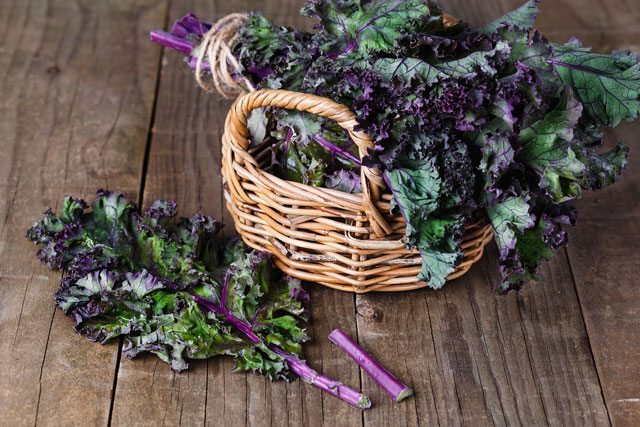
1. Spinach and Kale
Spinach and kale are very similar to each other in terms of how they’re handled by the body and the amount of nutrition they provide. Diabetics can enjoy as much of either one as they care for, and there really isn’t a huge advantage of one over the other.
You’ll be getting both Vitamin A and Vitamin C from each, as well as potassium, magnesium, and iron.
Baby spinach and baby kale are very much alike in terms of usability, each having their own taste which is their major difference.
You can use spinach and kale interchangeably in green smoothie recipes, but kale gets the edge in the snack department because it’s so easy to make kale chips that taste great and won’t leave you filled with regret when you’re done snacking.
Eating Nutrient Dense Foods
If you’re looking for some of the most nutrient dense foods on the planet you can’t go wrong with spinach and kale. Once for once they provide more vitamins and minerals than just about any other food, including other vegetables and fruit.
[hr]
2. Beans
Beans are a great addition to most any meal because they’ll help to stabilize your blood sugar, rather than have a detrimental effect or no effect at all. Foods like this are important because they can help balance out other foods that aren’t necessarily diabetic-friendly, and they can reduce the amount of insulin needed to bring your levels back to normal.
Beans are easy enough to add to a meal, and many recipes call for beans as part of the main dish. You can also whip up a side of beans rather quickly, and make them more palatable with a mix of seasonings and spices. Organic beans are your best choice, and are easily found in supermarkets across the country.
The Magical Fruit for Diabetics
Beans can be the one staple to your diabetic diet that really makes a marked difference in how you feel, and how stable your blood sugar stays. They’re satisfying, provide vitamins and minerals, and fiber to help with your digestion. They’re a part of many weight loss programs as well so you’re also promoting a healthy weight.
[hr]
3. Tomatoes
Tomatoes are consistently ranked as a superfood thanks to the lycopene they contain and all of its health benefits. As a diabetic you’ll want to be even more attention to your tomato intake, for all of their nutritious factors.
Perhaps the best feature of tomatoes is how easy they are to cook, and the number of ways that you can prepare them. For snacking try a salsa or add tomatoes to mashed avocado, another food on our list, for a diabetic-friendly guacamole. And of course tomatoes are a staple when it comes to pasta sauce recipes.
In addition to the lycopene in tomatoes, you’ll also be getting Vitamin C and Vitamin E, as well as minerals like iron to help cover your recommended values for the day.
Loaded with Lycopene
The lycopene in tomatoes is what gets the most headlines, and for good reason as it is routinely linked to anti-cancer benefits and heart health. You can get the most lycopene from the skins of tomatoes, and also from cooking them before eating.
[hr]
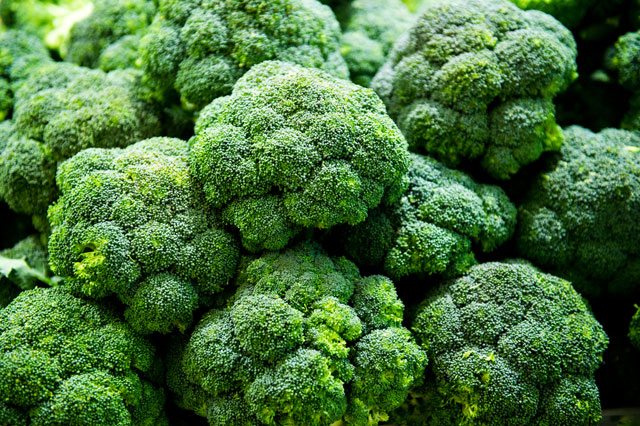
4. Broccoli
Don’t leave home without your broccoli! This is one vegetable you can fill up on because it doesn’t contain a lot of calories, and isn’t a starchy vegetable like peas and corn.
In fact, diabetics are recommended to eat a substantial amount of these types of vegetables, which not only will help with your diabetes, but will make you more healthy overall, with a greater sense of well-being.
Broccoli is off the charts when it comes to Vitamin C and also provides some Vitamin A, two vitamins that will boost your immune system, helping you stay at your best not just for the short term but for the long term as well.
Added Protein
Broccoli also contains some vegetable protein, so you’re helping to balance out your meal and getting a bit closer to meeting your daily protein goal.
[hr]
5. Apples
Apples are a good source of vitamins, minerals, and fiber, which is why they’re generally recognized as a healthy food. As a diabetic you may be wondering if apples are something you can eat or not.
The good news is that they are something that you can enjoy, and they join other fruits on our list as a potential way of having something that’s naturally sweet instead of opting for artificially sweetened items.
Moderation is Key
The saying is “an apple a day” and if you follow that sage advice you’ll be staying within the guidelines of diabetic eating. Having multiple servings of fruit can cause a problem, so you want to make sure that you’re getting the nutrients your body needs, without jeopardizing things by eating too much at once.
[hr]
6. Oatmeal
Starting off your day with a bowl of oatmeal is one way to get off on the right foot. When it comes to a diabetic breakfast it just might be your best bet.
Make sure to go with oatmeal that has undergone the least amount of processing. It will make a difference to how it affects your blood sugar levels. You’ll also want to avoid the instant kind with added flavors, as this usually means added sugar as well.
Spruce up your oatmeal with other foods found on this page like strawberries, blueberries, and raspberries. They’ll add plenty of fruit flavor while also conforming to your special dietary recommendations.
Lower Cholesterol Numbers
When you eat oatmeal on a regular basis you’ll be able to get your cholesterol numbers down if they’ve been hovering higher than they should. The oatmeal acts like a sponge and whisks away excess cholesterol.
[hr]
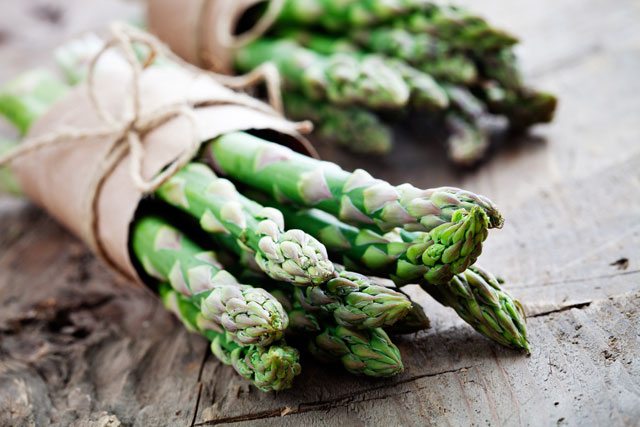
7. Asparagus
Eating asparagus is recommended for diabetics because it provides important vitamins and minerals, and is a non-starchy vegetable that can be eaten in larger quantities. It’s also a good source of fiber, and promotes weight loss, which is why you’ll often spot it on diet programs of all types.
Asparagus goes great with salmon, a diabetic food found on this list, and it also goes well with other protein dishes, like chicken and steak. It’s one of those vegetables that you simply can’t go wrong with.
Best in Spring and Summer
Asparagus is at its best in the spring and summer months, even though it’s possible to find this popular vegetable all year long.
[hr]
8. Grapefruit
The tart taste of grapefruit is something you don’t have to give up on a diabetic diet, and makes our list of diabetic foods.
Before adding grapefruit to your diet be sure to check if you have any contraindications, such as a medication that would be negatively affected by eating grapefruit.
Adding a sugar substitute to grapefruit can help cut down on the tartness and make it more likely to be eaten. You can only get the benefits of grapefruit by eating them, so if you’re not a fan of the taste try it with a little sugar alternative and see if that changes your mind.
Helps with Weight Loss
You’ll often see grapefruits mentioned in relation to weight loss and dieting because of its low calorie count and ability to rev up your metabolism. Keeping at a healthy weight is so important for diabetics that this is one diabetic superfood you should definitely add to your regular menu.
[hr]
9. Oranges
The citrusy sweet taste of oranges is something you can have as part of a diabetic diet, and of course you’re going to be getting the Vitamin C that comes pre-loaded in them.
One benefit of oranges is that it can help you abstain from other sweet treats that would provide a swift hit to your blood glucose levels. Managing diabetes is all about “eat this, not that” thinking and making the best choices in the moment.
Steer clear of the orange juice you find in stores, as nearly all of it is going to contain too much sugar to be considered diabetic-friendly. Juice your own oranges at home to make sure that you’re getting only the juice and nothing but the juice.
Top Up Your Vitamin C
When you eat an orange you’ll be doing yourself a big favor thanks to the Vitamin C it contains. This will help strengthen your immune system and is of particular importance when treating and managing diabetes.
[hr]
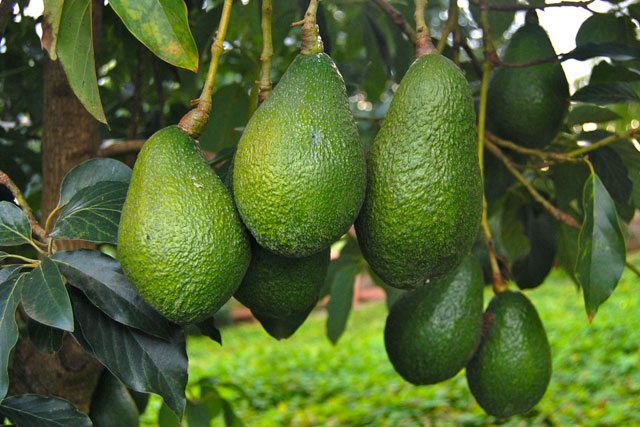
10. Avocados
Avocados can help you with your diabetes because they don’t take a toll on your blood sugar, and they provide plenty of fiber, minerals, and healthy fat to support a healthy lifestyle.
Healthy fats can help prevent heart disease, and diabetics are at a higher risk of developing heart disease. That’s why you’ll want to make sure to add avocados to your regular lineup. It isn’t hard, they can simply be added as a side dish, requiring no cooked and no preparation other than getting them out of their peel.
The fiber avocados have will not only help keep you regular, but helps with weight loss and feel satiated after a meal.
Rich in Healthy Fats
The healthy fats in avocados will keep you feeling full between meals, and can assist in the loss of excess body fat. These fats are different from the saturated fat that clogs arteries and causes fat gain, and are an essential part to the human diet that often gets overlooked.
[hr]
11. Salmon
Salmon is rich in omega-3s, which is why you’ll often find it on recommended food list of all types of dietary programs. Whether you’re looking to curb inflammation or help prevent heart disease, salmond is a winner.
The reason it makes the superfoods list for diabetics is because the importance of heart health is even more amplified, and because it goes to work to help keep your blood sugar levels stable, thereby helping you manage your diabetes day to day.
One of the Healthiest Foods You Can Eat
Consistently referred to as a healthy food you should be eating at least a few times a week, salmon is the one protein source that health experts are unanimous on. The great part about salmon is how easy it is to build a diabetic-friendly meal around it. Lay a salmon fillet on a bed of quinoa and have a side of broccoli and you will have one heck of a satisfying meal, all while keeping your blood sugar levels happy.
[hr]
12. Almonds
Almonds are a crunchy, healthy snacking option and can also be added to meals to boost their nutrition levels. They are light on the carbs, but big on healthy fat and magnesium.
It’s important to find out if your magnesium levels are running low because of your diabetes, and if so to use foods like almonds to help replenish those levels, as this is a key mineral the body needs, particularly to maintain healthy bones.
Go with raw and unsalted almonds for best results. Roasted almonds will have added fat in the form of miscellaneous oils used during the “roasting” process.
Healthy Fats and Protein
Almonds provide both healthy fats and protein to your diet, and can be very helpful when trying to manage your blood sugar levels with food.
[hr]

13. Blueberries
Whenever you feel run down or that you don’t have enough energy, reach for a handful of blueberries. They contain antioxidants and fiber and are a fruit that’s diabetic-friendly.
Blueberries aren’t just a tasty berry that will do minimal damage to your blood glucose, but they go a step further and can actually help your body manage your blood sugar by helping to process the glucose you do take in.
Foods can either help you out, hurt you, or have a negligible effect when it comes to your diabetes, and it’s so important to includes as many foods as you can that assist your body rather than hinder it.
Antioxidants Galore
Blueberries boast one of the highest antioxidant counts of all berries, and make a great addition to desserts and other menu items where a little berry sweetness plays nicely with the rest of the ingredients.
[hr]
14. Greek Yogurt
Greek yogurt has made its presence known in the dairy aisle in recent years, and provides more protein than ordinary yogurt. You can add it to your diet as a diabetic and not worry if it’s going to give you a problem.
Use Greek yogurt in a smoothie to give it the necessary smoothie texture, and to add protein to it, helping to balance it out. Greek yogurt makes a great replacement for things like sour cream and mayonnaise, providing more calcium and less fat so you can live a healthier life.
Use Nonfat Dairy
When choosing dairy products like milk and yogurt be sure that you’re opting for the fat-free versions. The American Diabetes Association recommends nonfat or low-fat dairy products, and also suggests stepping down from full fat versions so that you have time to get used to the differences in taste and texture.
[hr]
15. Cabbage
Cabbage is one vegetable you can eat up and stay in tune with healthy blood glucose levels. It’s not only a big help when it comes to weight loss, it’s a vegetable you can fill up on and not worry if it’s hurting you at all.
In that respect cabbage is very helpful because it does fill you up fast, and keeps you feeling full for awhile, making it a great vegetable to help round out your meal. There are also plenty of meals that feature cabbage as the star, such as cabbage rolls and cabbage soup.
You’re recommended to fill up half your plate with vegetables like cabbage, making it the main attraction of your meal, so it’s a good idea to cook it up in a way that makes it tasty.
Cruciferous Vegetables
The entire cruciferous vegetable family make great choices for diabetics, and are foods that are recommended for those looking to prevent diabetes as well. When looking for diabetic foods you can also consider foods suggested for the prevention of diabetes, even if you already have it these foods will still be of benefit to you.
[hr]

16. Quinoa
Perhaps you’ve heard about quinoa in recent years, as its been making the rounds along with the gluten-free trend. This is often referred to as a pseudo-grain because it shares properties of grains and cooks up like a grain, but isn’t necessarily a grain and is gluten free.
For diabetics, quinoa represents a better option than other blood sugar-spiking side dishes like white rice and traditional pasta. It’s full of protein and fiber as well as an assortment of vitamins and minerals.
If you’ve never tried quinoa before, it’s best to test your blood sugar levels before and after trying it to see how well you handle it.
It’s Gluten-Free
Quinoa is also a gluten-free food, and switching to a gluten-free diet may be of interest to you, as it may help you slim down to a healthy weight if necessary. It’s easy enough to test for a gluten sensitivity by eliminating it from your diet for a few weeks and noticing if there’s an improvement in the way you feel. Your doctor can also help you assess your gluten tolerance.
[hr]
17. Carrots
Carrots are a non-starchy vegetable that you’re recommended to get your fill of as a diabetic. You’ll be getting antioxidants in the form of Vitamin A from the beta-Carotene, but most importantly you’ll be staying within the bounds of a diabetic friendly food list.
You’ll want to go with organic carrots, and the most easily accessible variety has to be the mini version. While these used to be called “baby carrots” most manufacturers are switching the labeling to mini because they aren’t actually baby carrots but full sized carrots that have been cut down and peeled so they’re ready to eat.
All About the beta-Carotene
Carrots get their reputation as helping with eyesight thanks to the beta-Carotene the posses. This gets converted to Vitamin A by the body, and helps with everything from your immune system, to your eye health to healthy cellular growth.
[hr]
18. Flaxseed
Flaxseed can become your new best friend when charting out your plan for how to live and eat in a diabetic friendly manner. It provides fiber and omega-3s, and can easily be added to any meal or snack for added nutrition.
The lignans in flaxseed act as antioxidants, helping to protect you from free radical damage, so this is one diabetic food that is worth getting to know better if you’ve never tried it. The Mayo Clinic lists healthy eating as one of the ways to help manage type 2 diabetes, and flaxseed is one way to help the cause.
Ground flaxseed is so powdery that it’s a cinch to add it to soups, salads, and smoothies. If you add it to a salad make sure to add it after you add the dressing so it will cling to the dressing and not wind up on the bottom of the plate.
Boost Your Omega-3s
You’ll be getting omega-3s from flaxseed, but not the same kind that you get from salmon and other oily fish. The kind in flaxseed is called ALA, while fish provides DHA and EPA. You’ll want to be sure you’re eating foods rich in all types to get the most benefit from supplementing your diet with omega-3s.
[hr]
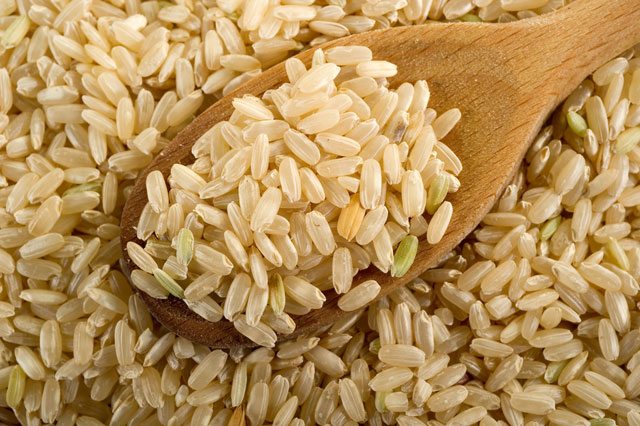
19. Brown Rice
Brown rice makes a great side dish, as well as a great bed for things like salmon fillets. It has a flavor that is distinctly different than white rice, and provides plenty more benefits.
For starters, brown rice contains more fiber than white rice, as it has all of its natural parts intact. White rice has been stripped of its bran and therefore can’t provide the same amount of fiber. The fiber content in brown rice will help you feel full and help your digestion along.
Brown rice is a high quality carb that you can use to round out a meal without putting a strain on your blood glucose levels.
Avoid White Rice
Unlike brown rice, white rice has been processed and does not contain the good things that brown rice does. It is broken down by the body quite differently, and will have an adverse affect on your blood sugar levels, whereas brown rice will not. It also contains less fiber than brown rice.
[hr]
20. Sweet Potatoes
Sweet potatoes are a great choice if you’re looking for a starchy vegetable that will keep you feeling full long after your meal. They’re full of beta-Carotene, which your body will switch over to Vitamin A and really helps your immune system.
They’re also a great source of fiber, so you’re doing your digestive system a favor as well, which helps the body in a number of ways, like preventing constipation as well as preventing diarrhea.
Baking your sweet potatoes is essentially the easiest way to cook them without adding any extra fat or calories, and having them taste as good as they can. Be leery of sweet potato casseroles as these will most assuredly not be diabetes-friendly.
Baked Potatoes Work Too
You may have heard that sweet potatoes are preferable to white potatoes, or that you should be avoiding white potatoes because they’re not healthy. But as long as they are prepared in a healthy manner, such as baking them, they are a nutritious food item that you can enjoy as a diabetic. They may be higher up on the GI scale, but should still be acceptable.
[hr]
21. Cranberries
Cranberries are a rich source of phytochemicals that will help your body in a number of ways, and at the same time they won’t set you back when it comes to maintaining healthy blood glucose levels.
They’re also great for weight loss and for helping to lower your cholesterol, two factors that will greatly enhance your overall health and help ease symptoms related to diabetes.
Because of the concentrated amount of sugar in dried cranberries, marketed as Craisins, you will want to stick to fresh cranberries.
Little Berry, Big Nutrition
The nutrition content of cranberries makes them an excellent choice for maintaining a healthy lifestyle. You can also use cranberry juice as a way to mitigate the damage done to your blood sugar levels if you find that they’re spiking.
[hr]

22. Soy Foods
There are many foods derived from soybeans, and they make a good choice because soybeans are naturally high in protein and fiber while being low in carbs and calories.
Tofu and tempeh are the two most widely available forms of soy food products, and both will help you by providing a nutritious item to your menu without a lot of saturated fat or carbs. You’ll be getting a non-meat protein source that has been used by vegetarians and vegans for decades as a meat replacement.
One factor to consider is the relation of soy products to thyroid health. If you’ve had thyroid trouble or are currently struggling with it, you’ll want to do additional research on whether soy foods should be eaten.
Soy on the Glycemic Index
Soy products consistently rank low on the Glycemic Index, which is why you can eat healthy amounts of them without a big change in your blood glucose levels.
[hr]
23. Strawberries
Here’s a diabetic food that you won’t have to push yourself to eat, one of the most popular berries on the planet: strawberries.
Always go with fresh or frozen organic strawberries. They make great additions to smoothies, or you can make homemade ice cream with them. They’re a great fruit to have around because they’re good for you and there’s a high likelihood that you’ll eat them before other less healthy options.
One thing to watch out for is strawberries that have been prepared either in a jam or as a dessert topping. These will almost always be packed with sugar to enhance their taste, but at the same time make them a no-go.
Watch Your Serving Sizes
Because of the fructose in strawberries you’ll want to make sure that you don’t get too carried away with them in one sitting. They’re one of the more naturally delicious fruits available, and because of that it can be very easy to have a few too many before realizing it.
[hr]
24. Whole-Grain Bread
When making a sandwich you’ll want to choose whole-grain bread every time. It contains grains that will provide you with minerals and fiber, and make it a better choice than white bread, a refined starch that can cause problems for diabetics.
Luckily there are more whole-grain bread options available than ever before, making it easier to stick to a diabetic friendly bread. You should always check in with your meter to see how you handle different foods, and checking to see how your levels respond to different breads, or bread in general, can be a big help in structuring your own personal diet.
Avoid White Bread
White bread, much like white rice, is something that you’ll want to steer clear of and always opt for whole grain instead. It is processed by the body much differently than whole-grain bread is, and has less fiber.
[hr]

25. Cucumbers
Adding cucumbers to your diabetic diet is an excellent way to get some added minerals and vitamins, as well as some water into your system. The B Vitamins in cucumbers will help you stay clear-headed, and they contain lignans that can help prevent a number of different cancers.
You’ll often find cucumbers on the approved foods list of diet programs because they’re known to help facilitate weight loss. As a diabetic you know how important it is to come down to a healthy weight and maintain that weight, and cucumbers can be of assistance in that area.
A Hydrating Vegetable
You’ll be helping to hydrate the body when you eat cucumbers, because they’re mostly made up of water. Staying hydrated plays a key role in your blood sugar levels, so it’s important to eat foods that help the cause, and drink enough water to keep them as stable as possible.
You may also like our list of diabetic-friendly desserts.



